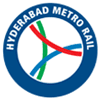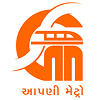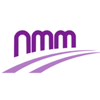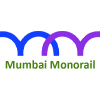Select Stations To Find India Route
Overview & History
- The Delhi–Meerut Regional Rapid Transit System (Delhi–Meerut RRTS) is a semi-high-speed rail that will connect the National Capital Region (NCR) cities of Delhi, Ghaziabad and Meerut.
- First time in 2013, The Governments of India and Delhi create a comprehensive plan for developing a regional railway that will connect Delhi.
- After that in July 2013 Governments of India formed a joint venture company in between Haryana, Rajasthan, Uttar Pradesh, and Delhi that called National Capital Region Transport Corporation (NCRTC) for designing, developing, implementing, financing, operating, and maintaining the RRTS.
- The main objective of NCRTC is to reduce the dependence of commuters on road-based transportation and enhance regional connectivity within the NCR and beyond, and construct, own and operate the Regional Rapid Transit Systems (RRTS).
- In May 2017, the Government of Uttar Pradesh approved DPR of RRTS making by NCRTC and in February 2019 the same DPR was approved by Government of India with the ₹30,274 crore Rupee.On 8 March 2019, Prime Minister Narendra Modi laid the foundation stone of the corridor along with the Meerut Metro project.
Interesting Facts about Delhi Meerut RRTS
Delhi Meerut RRTS Lines & Terminal Stations
Status: AC = Active, UC = Under Construction, AP = Approved for Construction, PL = In Plan
Delhi Meerut RRTS Network Map 2024
Delhi Meerut RRTS Fare Chart
Standard Class (Fare in ₹):
| Station | A03 | A04 | A05 | A06 | AS2 | A07 | A08 | A09 | A10 |
|---|---|---|---|---|---|---|---|---|---|
| Sahibabad (A03) | - | 30 | 30 | 40 | 50 | 60 | 80 | 90 | 110 |
| Ghaziabad (A04) | 30 | - | 20 | 30 | 30 | 40 | 60 | 80 | 90 |
| Guldhar (A05) | 30 | 20 | - | 20 | 30 | 30 | 50 | 60 | 80 |
| Duhai (A06) | 40 | 30 | 20 | - | 20 | 20 | 40 | 50 | 70 |
| Duhai Depot (AS2) | 50 | 30 | 30 | 20 | - | 30 | 40 | 60 | 80 |
| Murad Nagar (A07) | 60 | 40 | 30 | 20 | 30 | - | 20 | 30 | 60 |
| Modi Nagar South (A08) | 80 | 60 | 50 | 40 | 40 | 20 | - | 20 | 40 |
| Modi Nagar North (A09) | 90 | 80 | 60 | 50 | 60 | 30 | 20 | - | 30 |
| Meerut South (A10) | 110 | 90 | 80 | 70 | 80 | 60 | 40 | 30 | - |
Premium Class (Fare in ₹):
| Station | A03 | A04 | A05 | A06 | AS2 | A07 | A08 | A09 | A10 |
|---|---|---|---|---|---|---|---|---|---|
| Sahibabad (A03) | - | 60 | 60 | 80 | 100 | 120 | 160 | 180 | 220 |
| Ghaziabad (A04) | 60 | - | 40 | 60 | 60 | 80 | 120 | 160 | 180 |
| Guldhar (A05) | 60 | 40 | - | 40 | 60 | 60 | 100 | 120 | 160 |
| Duhai (A06) | 80 | 60 | 40 | - | 40 | 40 | 80 | 100 | 140 |
| Duhai Depot (AS2) | 100 | 60 | 60 | 40 | - | 60 | 80 | 120 | 160 |
| Murad Nagar (A07) | 120 | 80 | 60 | 40 | 60 | - | 40 | 60 | 120 |
| Modi Nagar South (A08) | 160 | 120 | 100 | 80 | 80 | 40 | - | 40 | 80 |
| Modi Nagar North (A09) | 180 | 160 | 120 | 100 | 120 | 60 | 40 | - | 60 |
| Meerut South (A10) | 220 | 180 | 160 | 140 | 160 | 120 | 80 | 60 | - |
Delhi Meerut RRTS News & Updates
Anand Vihar, the first underground station of the RRTS corridor, is ready to welcome passengers. People can get the gift of semi high speed Namo Bharat train on the new year.
◷ 2024-12-18 | ☍ Navbharat TimesTo provide better facilities to NCRTC passengers, three bridges have been built on the Ghazipur drain passing in front of the station, out of which the bridge will be reserved for vehicles coming to the station for pick and drop, the second for pedestrians and the third has been built for exiting the station.
◷ 2024-12-18 | ☍ Navbharat TimesThe outer part of Anand Vihar station has been decorated with a facade of modern grey panels. At the same time, attractive shiny vitreous enamel panels have been used at the concourse and platform level inside the station. Two entry exit gates have been built for the convenience of passengers in the station.
◷ 2024-12-18 | ☍ News 24Delhi Meerut RRTS FAQs
𝒜. Commuters are encouraged to generate QR tickets digitally. Ticket generation can be done from anywhere, whether it be at home or in the office, but the tickets must be scanned on the station AFC within two hours of generating them.
In the case of paper QR tickets, the commuter is required to scan the tickets on the station AFC within 30 minutes of the ticket generation.
𝒜. In the RRTS every child under 90 cm accompanied by an adult passenger will be allowed to travel free in RRTS Services.
𝒜. National Common Mobility Card (NCMC) Card – Any NCMC compliant card can be use in RRTS services. Commuters can recharge/purchase these cards from ticket counters at the RRTS Stations.
Ticket Vending Machines (TVMs) will also be equipped with a credit/debit/prepaid card reader compliant with RuPay NCMC standard for non-cash payment of transactions.
Paper QR code-based journey ticket – Can be generated via Ticket Vending Machines (TVMs) or bought from the Ticket counters at the RRTS Stations.
𝒜. No. Bicycles are not allowed in RRTS.
𝒜. The premium coach can be reached only through the premium lounge on the platform.
Doing this requires a commuter to double tap either the ticket or the National Common Mobility Card, first at the entry automatic fare collection gate and again at the platform AFC gate.
This will facilitate entry into the premium lounge to access the premium coach.
𝒜. Premium coaches come equipped with a variety of extra facilities that cater to commuters, such as magazine holders, coat hooks, footrests, and reclining chairs. They also have a separate colour code for each seat and an opening for a vending machine in the future.
𝒜. RRTS vs Metro:
- The RRTS and Metro Rail Systems are two new-age Mass Rapid Transit Systems that have different objectives.
- These two services are planned to complement each other, enabled by seamless multi-modal integration.
- The RRTS Service is designed for efficient connectivity between regional nodes or cities, while Metro Systems are intended for intra-city travel.
- RRTS Stations are generally located 5 to 10 km apart, compared to the average distance of 2 km between Metro stations.
- The NAMO BHARAT Train will travel at an average speed of 90 kmph, while a metro train, on the other hand, usually operates at 30 kmph speed.
Explore Other Metro Networks

Delhi Metro

Gurgaon Metro

Jaipur Metro

Mumbai Metro

Bangalore Metro

Hyderabad Metro

Chennai Metro

Kochi Metro

Kolkata Metro

Lucknow Metro

Noida Metro

Nagpur Metro

Ahmedabad Metro

Pune Metro

Kanpur Metro

Agra Metro

Navi Mumbai Metro

Mumbai Monorail